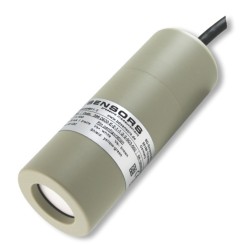 Device for measuring liquid level and converting it to an electrical signal to send to other instrumentation.
Device for measuring liquid level and converting it to an electrical signal to send to other instrumentation.
A liquid level sensor is an instrument for measuring the height of a liquid and converting it to an electrical signal which is sent to other instrumentation to display, monitor, log or control the liquid level.
There are many different types of technology use to measure liquid level, there are sensors that can be mounted above the liquid such as ultrasonic or radar which bounce a sound or electromagnetic wave off the surface of the liquid and use the travel time to determine the distance from the liquid surface.
For liquid filled tanks there are sensors which can be attached externally, such as floats running up and down a liquid filled tube connected at the bottom of the tank, or a pressure sensor installed in a hole in the bottom of the tank which measures the pressure generated by gravity acting on the liquid.
Another method is to lower a probe into the tank and immerse it in the liquid such as a capacitive probe which detects the changing capacitance charge as the length of the probe is exposed to varying proportions of liquid and air, or pressure sensors which measure the pressure generated by gravity acting on the surrounding liquid.
Products
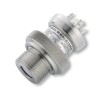 Hydrostatic Level Sensors
Hydrostatic Level Sensors ATEX Approved Liquid Level Sensors for Hazardous Areas
ATEX Approved Liquid Level Sensors for Hazardous Areas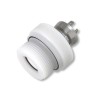 External Mounted Tank Level Sensors
External Mounted Tank Level Sensors Waste Water Level Sensors
Waste Water Level Sensors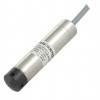 Water Level Transmitters with 4-20mA Output
Water Level Transmitters with 4-20mA Output Chemical Resistant Hydrostatic Liquid Level & Pressure Sensors
Chemical Resistant Hydrostatic Liquid Level & Pressure Sensors 4-20mA Output Hydrostatic Level Transmitters & Sensors
4-20mA Output Hydrostatic Level Transmitters & Sensors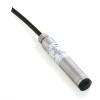 Submersible Liquid Level Sensors
Submersible Liquid Level Sensors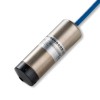 Marine Approved Liquid Level Sensors
Marine Approved Liquid Level Sensors Diesel Fuel Tank Level Sensors
Diesel Fuel Tank Level Sensors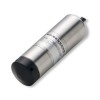 HART® Liquid Level Transmitters
HART® Liquid Level Transmitters 0-10 Volts Output Hydrostatic Sensors, Probes & Transducers
0-10 Volts Output Hydrostatic Sensors, Probes & Transducers Detachable Cable Submersible Liquid Level Sensor Probes
Detachable Cable Submersible Liquid Level Sensor Probes Intrinsically Safe Liquid Level Sensors
Intrinsically Safe Liquid Level Sensors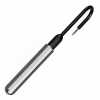 SDI-12 Hydrostatic Liquid Level Sensors
SDI-12 Hydrostatic Liquid Level Sensors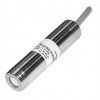 Landfill Site Submersible Leachate Level Transmitters
Landfill Site Submersible Leachate Level Transmitters High Temperature Liquid Level Sensors
High Temperature Liquid Level Sensors Sea, Brackish or Salt Water Submersible IP68 Depth & Level Sensors
Sea, Brackish or Salt Water Submersible IP68 Depth & Level Sensors Submersible Hydrostatic Level Sensors & Probes
Submersible Hydrostatic Level Sensors & Probes Low Range, Shallow Depth Liquid Level Sensors
Low Range, Shallow Depth Liquid Level Sensors Submersible Diesel Tank Level Sensors
Submersible Diesel Tank Level Sensors
Technology Comparison Table
Please use the table below to compare the advantages and disadvantages of each liquid level sensor technology type versus application and specification parameters.
| Capacitive | Hydrostatic | Ultrasonic | Radar | |
|---|---|---|---|---|
| media contact | yes | yes | no | no |
| moving parts | no | yes | no | no |
| surface disturbance sensitive | no | no | yes | no |
| pressurised vessel | yes | more difficult | yes | yes |
| vacuum evacuated vessel | yes | more difficult | no | yes |
| installation position | top | side, bottom | top | top |
| thick fluids | no | yes with flush diaphragm | yes | yes |
| protrusion into tank | yes | no | no | no |
| sg density variation sensitive | yes | yes | no | no |
| fouling degrades performance | yes | yes | no | no |
| accuracy | low | high | high | high |
| cost | high | high | high | high |
Related Help Guides
- Difference between vented and non-vented water level measurement
- Determining water tank volume using hydrostatic pressure
- Measuring the volume of liquid in a horizontal cylinder tank
- Choosing PVC, PUR, FEP and TPE cable types
- How to reduce submersible pressure sensor failures caused by moisture ingress
- Using absolute pressure sensors to measure hydrostatic level
- Determining the hydrostatic pressure range for a tank level sensor
- Measuring liquid level in a sealed tank with a hydrostatic pressure sensor
- Using a screw-in or waterproof pressure transmitter to measure liquid level
- Improve the electrical termination of vented submersible pressure sensors
- Considerations for monitoring Landfill Water Level
- Why are Submersible applications so demanding of Pressure Transducers?
- Determining the Signal Cable Length of a Suspended Liquid Level Transducer
- Stop sea water level or depth sensor failures due to pitting or corrosion

